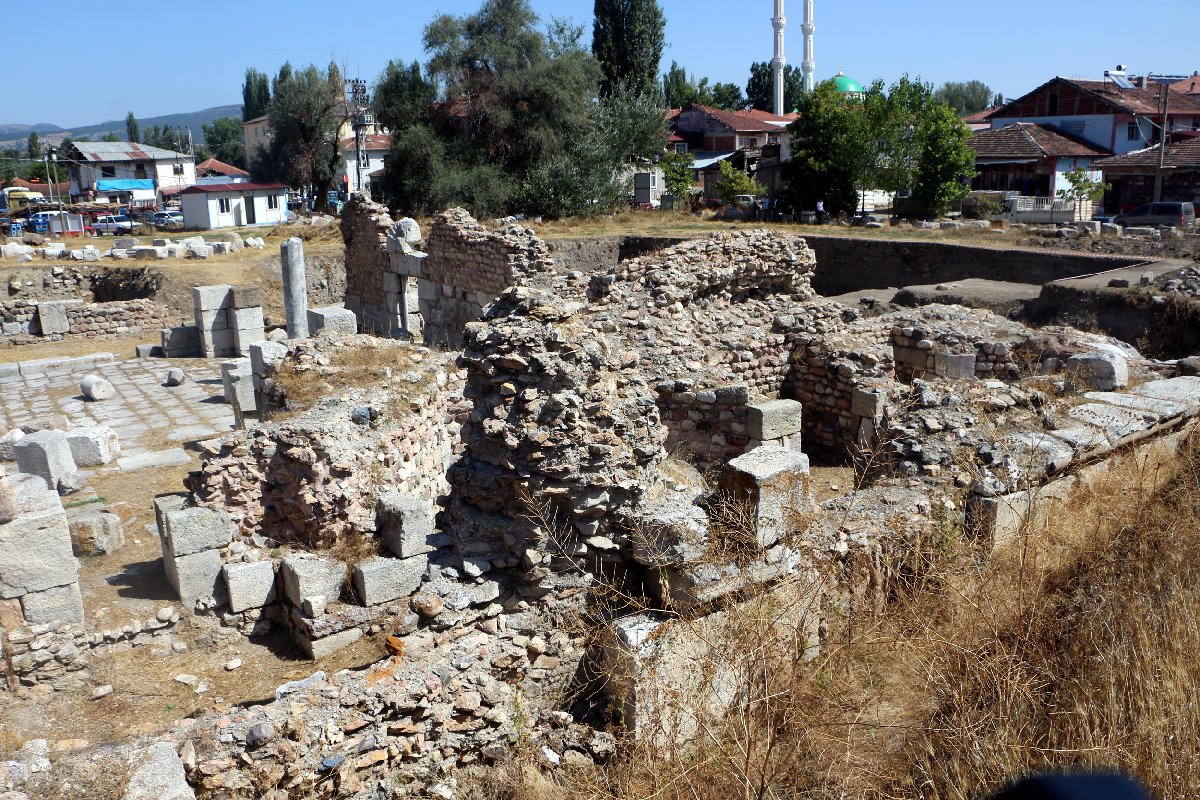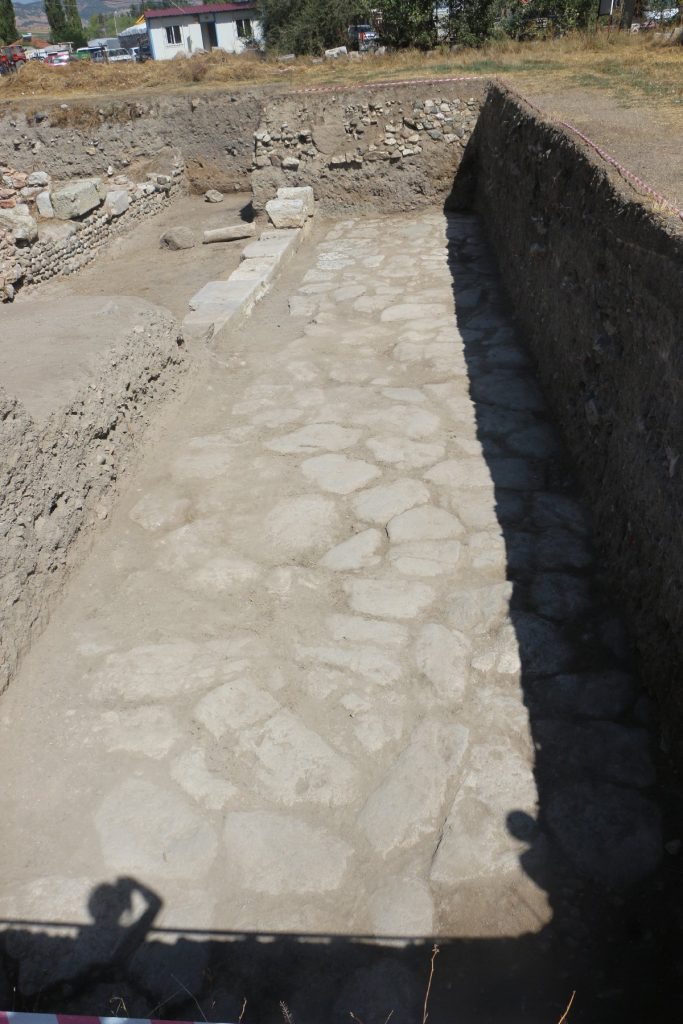
The 2000-year-old Roman road was unearthed in Sebastapolis Ancient City
Sebastapolis Ancient City, located in Tokat province in the Black Sea region of Türkiye and dating back to the 1st century A.D., has revealed a 2,000-year-old Roman road.
The foundation date of Sebastapolis Ancient City, built on a large mound dating back to the Early Bronze Age, is not yet known definitively. Some sources suggest it was founded in the 1st century B.C.
During the reign of Roman Emperor Trajan (A.D. 98 – 117), the regions of Pontus Galaticus and Polemoniacus were separated from the province and included into the province of Cappadocia. A plaque or inscription regarding this matter was erected by the prominent citizens and the people of the city in the name of Cappadocia’s governor Arrian.
“Sebastapolis” means in Latin, “Great majestic city.” It is also mentioned in some sources as “Herakleopolis,” which translates to “City of Herakles.” Herakles is a semi-divine or heroic figure symbolizing strength and power in Greek and Roman mythology.
Sebastopolis is an important center that was granted the privilege of using a new calendar and the right to name their city after the Emperor Augustus in the years 3-2 BC.
Sebastopolis began minting coins during the time of Trajan. In this context, the city minted coins from Trajan to Gallienus during the Imperial period. Trajan, who added the Pontus Galaticus Province to the territory of Cappadocia, aimed to Romanize Sebastopolis in Anatolia.
During the Roman period, Sebastopolis emerged as a wealthy and prosperous city. It was visited by Roman emperors, and structures like the gymnasium and stoa were built in honor of the emperors.

The archaeological excavations at the ancient city, which bears significant traces from the Hellenistic, Roman, and Byzantine periods, began in the year 1987.
In the 2023 excavation season, the most recent discovery was a 2000-year-old Roman road.
Sulusaray Mayor Necmettin Coruk, stated that the excavations led by Assoc. Prof. Dr. Akın Temur from the Faculty of Humanities and Social Sciences at Ondokuz Mayıs University have come to an end. He mentioned, “Sebastapolis Ancient City is a settlement located in the center of our district, surrounded by double walls, dating back to the Roman and Byzantine periods. The most exciting discovery for us at the moment is the 2,000-year-old Roman road. Sebastapolis Ancient City consists of two parts, the church and the bathhouse section. Currently, we are working in the bathhouse section.”
You may also like
- A 1700-year-old statue of Pan unearthed during the excavations at Polyeuktos in İstanbul
- The granary was found in the ancient city of Sebaste, founded by the first Roman emperor Augustus
- Donalar Kale Kapı Rock Tomb or Donalar Rock Tomb
- Theater emerges as works continue in ancient city of Perinthos
- Urartian King Argishti’s bronze shield revealed the name of an unknown country
- The religious center of Lycia, the ancient city of Letoon
- Who were the Luwians?
- A new study brings a fresh perspective on the Anatolian origin of the Indo-European languages
- Perhaps the oldest thermal treatment center in the world, which has been in continuous use for 2000 years -Basilica Therma Roman Bath or King’s Daughter-
- The largest synagogue of the ancient world, located in the ancient city of Sardis, is being restored











Leave a Reply